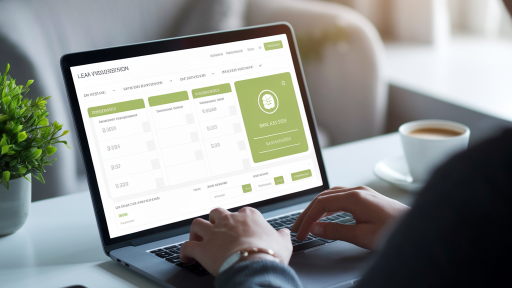Navigating the world of finance has dramatically shifted from long queues in brick-and-mortar banks to a few simple clicks on a screen. The rise of digital lending has made accessing funds faster and more convenient than ever before, but it also brings a new set of questions and procedures to understand.
This guide is designed to demystify the entire process. We’ll walk you through everything from the crucial preparation phase to understanding the fine print of your loan offer, ensuring you can approach your application with confidence and clarity.
Before You Apply: The Essential Preparation Phase
Jumping straight into applications without preparation is like taking a road trip without a map. A little groundwork can significantly increase your chances of approval and help you secure the best possible terms. This phase is all about understanding your needs and assessing your financial standing from a lender’s perspective.
Define Your “Why”: The Purpose of Your Loan
First things first, get crystal clear on why you need the loan. Lenders will always ask, and your answer can influence their decision. Is it for debt consolidation, a major home repair, a medical emergency, or starting a small business? Having a specific, legitimate purpose shows you’ve thought through your financial needs. This clarity will also help you determine the exact amount you need to borrow, preventing you from taking on unnecessary debt.
Conduct a Financial Health Check-Up
Before a lender evaluates you, you should evaluate yourself. This involves looking at two key metrics that are paramount in the lending world: your credit score and your debt-to-income ratio.
- Credit Score: This three-digit number is a snapshot of your creditworthiness. A higher score generally translates to lower interest rates and better loan offers. You can get a free copy of your credit report from major credit bureaus. Review it for any errors that could be dragging your score down and dispute them if necessary.
- Debt-to-Income (DTI) Ratio: Your DTI is the percentage of your gross monthly income that goes toward paying your monthly debt payments. Lenders use it to gauge your ability to manage monthly payments and repay new debt. A lower DTI is always better. To calculate it, add up all your monthly debt payments (rent/mortgage, credit cards, auto loans, etc.) and divide that by your gross monthly income.
Gather Your Digital Paperwork
The beauty of an online application is the digital submission of documents. Having these files scanned and ready on your computer will make the process incredibly smooth. While requirements vary by lender, you will most likely need the following:
- Proof of Identity: A clear, valid government-issued photo ID (e.g., driver’s license, passport).
- Proof of Income: Recent pay stubs, W-2 forms, or tax returns if you’re self-employed.
- Proof of Address: A recent utility bill or bank statement with your name and current address.
- Bank Statements: Lenders often ask for the last few months of bank statements to see your cash flow and financial habits.
- Social Security Number (SSN): For identity verification and credit checks.
A Detailed Guide to the Online Loan Application Process
With your preparation complete, you’re ready to navigate the application itself. This structured, step-by-step approach will help you move through the process efficiently and make informed decisions along the way.
Step 1: Research and Compare Lenders
Not all lenders are created equal. The online lending market is vast, comprising traditional banks, credit unions, and dedicated online lending platforms. Each has its own pros and cons, interest rates, and eligibility criteria. Spending time on this step can save you a significant amount of money over the life of the loan. Look for reviews, check their Better Business Bureau ratings, and compare the key features.
| Lender Type | Pros | Cons |
|---|---|---|
| Traditional Banks | Often have competitive rates for existing customers; established reputation. | Stricter eligibility requirements; slower application process. |
| Credit Unions | Typically offer lower interest rates and fees; more flexible with members. | Membership requirements; may have less advanced online technology. |
| Online Lenders | Fast application and funding times; often more lenient criteria. | Interest rates can be higher, especially for those with poor credit. |
Step 2: Get Pre-Qualified
This is a game-changing feature of modern online lending. Pre-qualification allows you to see the potential loan amounts, rates, and terms you might qualify for without impacting your credit score. Lenders perform a “soft” credit inquiry, which isn’t visible to other lenders. By getting pre-qualified with several lenders, you can effectively shop around for the best offer without any negative consequences to your credit profile.
Step 3: Complete the Full Application Form
Once you’ve chosen a lender based on your pre-qualification offers, it’s time to fill out the official application. This will be more detailed than the pre-qualification form. You’ll provide personal information, employment and income details, and specifics about the loan you’re requesting. Be meticulously accurate. Any discrepancies between the information you provide and the documents you upload can cause delays or even a denial.
Step 4: Securely Upload Your Documents
This is where your prepared digital paperwork comes in handy. The lender’s online portal will provide a secure method for you to upload your documents. Ensure your scans or photos are clear and that all information is legible. Double-check that you have uploaded the correct document for each requirement.
Step 5: Review, Sign, and Submit
Before you hit that final “submit” button, take a moment to review everything. Read through every field of the application to catch any typos or errors. Once you’re certain all the information is correct, you will electronically sign the application and submit it. This action gives the lender permission to perform a “hard” credit inquiry, which will be recorded on your credit report.
After You Submit: What Happens Next?
The waiting period after submission can be nerve-wracking, but understanding the final stages of the process can provide some peace of mind.
The Underwriting and Verification Stage
This is the behind-the-scenes work. An underwriter (or an automated system) will review your entire application. They will verify your income, employment, and identity, and they will perform the hard credit check. They are assessing the risk of lending to you and ensuring all information is accurate. If they need any clarification, they may reach out to you directly.
Receiving and Understanding Your Loan Offer
If you are approved, you will receive an official loan offer. This is the most critical document to review. Do not just look at the loan amount. Pay close attention to these key terms:
- Annual Percentage Rate (APR): This is the true cost of your loan. It includes your interest rate plus any associated fees, expressed as a yearly percentage. It is a more accurate measure of cost than the interest rate alone. For a deeper understanding, you can review detailed explanations of what an Annual Percentage Rate (APR) entails from reputable financial sources.
- Loan Term: This is the length of time you have to repay the loan (e.g., 36, 48, or 60 months). A longer term means lower monthly payments but more interest paid overall. A shorter term means higher monthly payments but less interest paid.
- Fees: Look for any origination fees (a fee for processing the loan, often deducted from the principal), late payment fees, or prepayment penalties (a fee for paying the loan off early).
Accepting the Offer and Receiving Funds
If you are happy with the terms, you will electronically sign the loan agreement. Once signed, the process is complete. Most online lenders are very fast at this final stage, with many depositing the funds directly into your bank account within one to two business days.
Common Mistakes to Avoid
Navigating the online loan application process is generally straightforward, but a few common missteps can cause problems. Being aware of them can help you ensure a smoother experience.
- Ignoring the Fine Print: Always read the full loan agreement before signing. Understanding all the terms, conditions, and potential fees is your responsibility.
- Applying Everywhere at Once: While pre-qualification is safe, submitting multiple full applications in a short period is not. Each hard inquiry can slightly lower your credit score, making you look like a high-risk borrower to lenders.
- Not Checking Your Credit Report First: Errors on your credit report are surprisingly common. An uncorrected error could lead to a denial or a much higher interest rate than you deserve. It’s always best to review your report, which you can often do for free through services provided by bureaus like Experian.
- Falling for Predatory Lenders: Be wary of lenders who promise “guaranteed approval,” demand upfront fees, or pressure you into signing immediately. Legitimate lenders will never do this. The Federal Trade Commission (FTC) offers resources to help consumers identify potential loan scams.
Frequently Asked Questions (FAQ)
Here are answers to some of the most common questions people have about the online loan application journey.
How long does the online loan application process take?
The application itself can often be completed in 15-30 minutes if you have all your documents ready. The time from submission to funding can vary. Many online lenders can provide a decision within minutes and deposit funds in 1-3 business days. Traditional banks may take longer.
Will applying for a loan online hurt my credit score?
The pre-qualification step, which involves a soft inquiry, will not hurt your credit score. Submitting a full application, which triggers a hard inquiry, can cause a small, temporary dip in your score (usually a few points). Multiple hard inquiries in a short time can have a more significant impact.
Is it safe to submit my personal information online?
Yes, provided you are using a reputable and secure lender. Look for “https://” in the website URL, which indicates a secure, encrypted connection. Avoid applying for loans on public Wi-Fi. Stick with well-known banks, credit unions, and highly-rated online lending platforms.
Your Path to a Successful Application
The ability to apply for a loan from the comfort of your home is a powerful financial tool. By being prepared, methodical, and diligent, you can navigate the process with ease. The key is to do your homework, understand your own financial picture, and carefully read every detail before committing.
This organized approach not only increases your chances of securing the funds you need but also ensures you get a loan with fair terms that you can comfortably manage. For a more in-depth look at your rights and what to look for in a loan, you can review this comprehensive guide to the online loan application from the Consumer Financial Protection Bureau.




